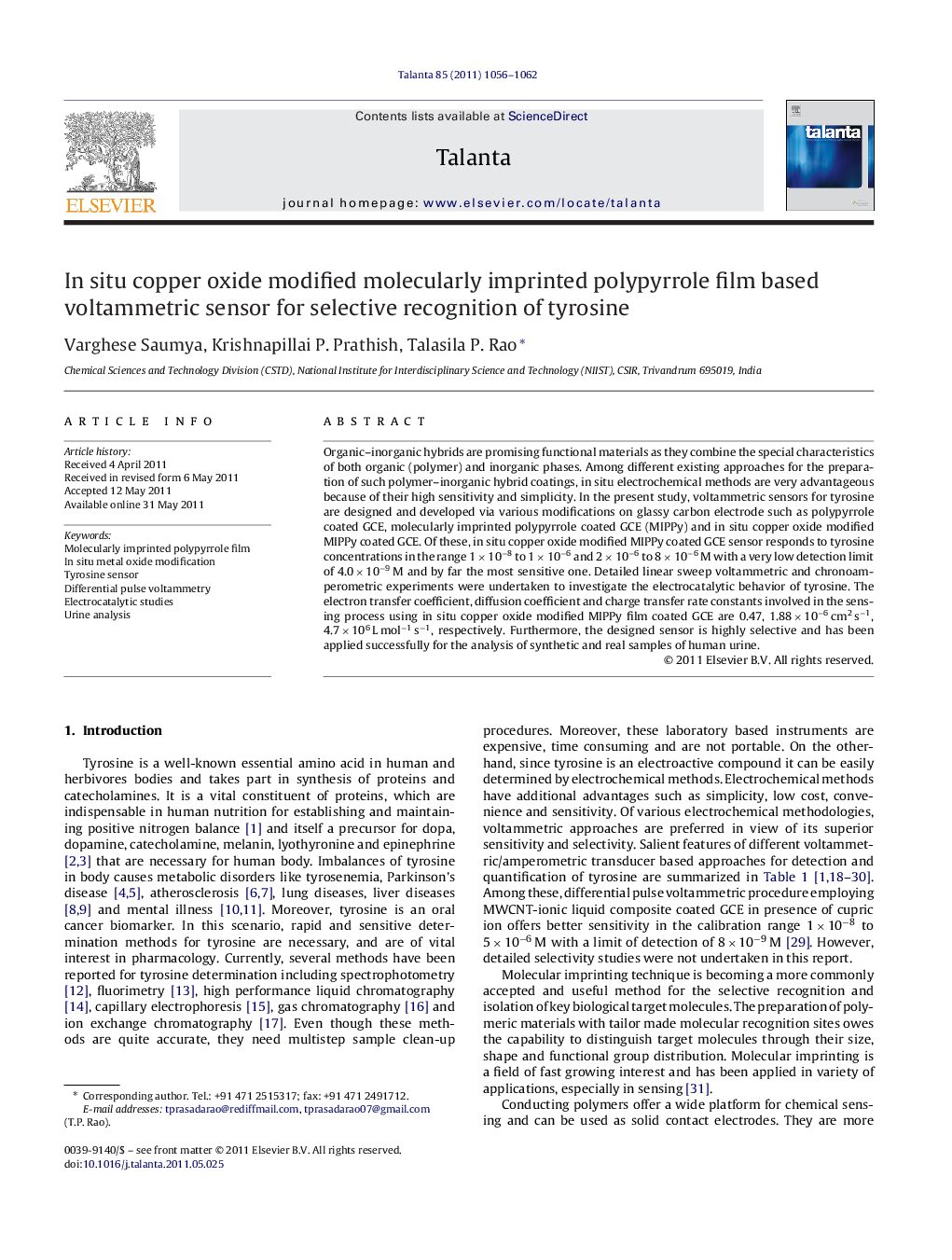| Article ID | Journal | Published Year | Pages | File Type |
|---|---|---|---|---|
| 1242376 | Talanta | 2011 | 7 Pages |
Organic–inorganic hybrids are promising functional materials as they combine the special characteristics of both organic (polymer) and inorganic phases. Among different existing approaches for the preparation of such polymer–inorganic hybrid coatings, in situ electrochemical methods are very advantageous because of their high sensitivity and simplicity. In the present study, voltammetric sensors for tyrosine are designed and developed via various modifications on glassy carbon electrode such as polypyrrole coated GCE, molecularly imprinted polypyrrole coated GCE (MIPPy) and in situ copper oxide modified MIPPy coated GCE. Of these, in situ copper oxide modified MIPPy coated GCE sensor responds to tyrosine concentrations in the range 1 × 10−8 to 1 × 10−6 and 2 × 10−6 to 8 × 10−6 M with a very low detection limit of 4.0 × 10−9 M and by far the most sensitive one. Detailed linear sweep voltammetric and chronoamperometric experiments were undertaken to investigate the electrocatalytic behavior of tyrosine. The electron transfer coefficient, diffusion coefficient and charge transfer rate constants involved in the sensing process using in situ copper oxide modified MIPPy film coated GCE are 0.47, 1.88 × 10−6 cm2 s−1, 4.7 × 106 L mol−1 s−1, respectively. Furthermore, the designed sensor is highly selective and has been applied successfully for the analysis of synthetic and real samples of human urine.
